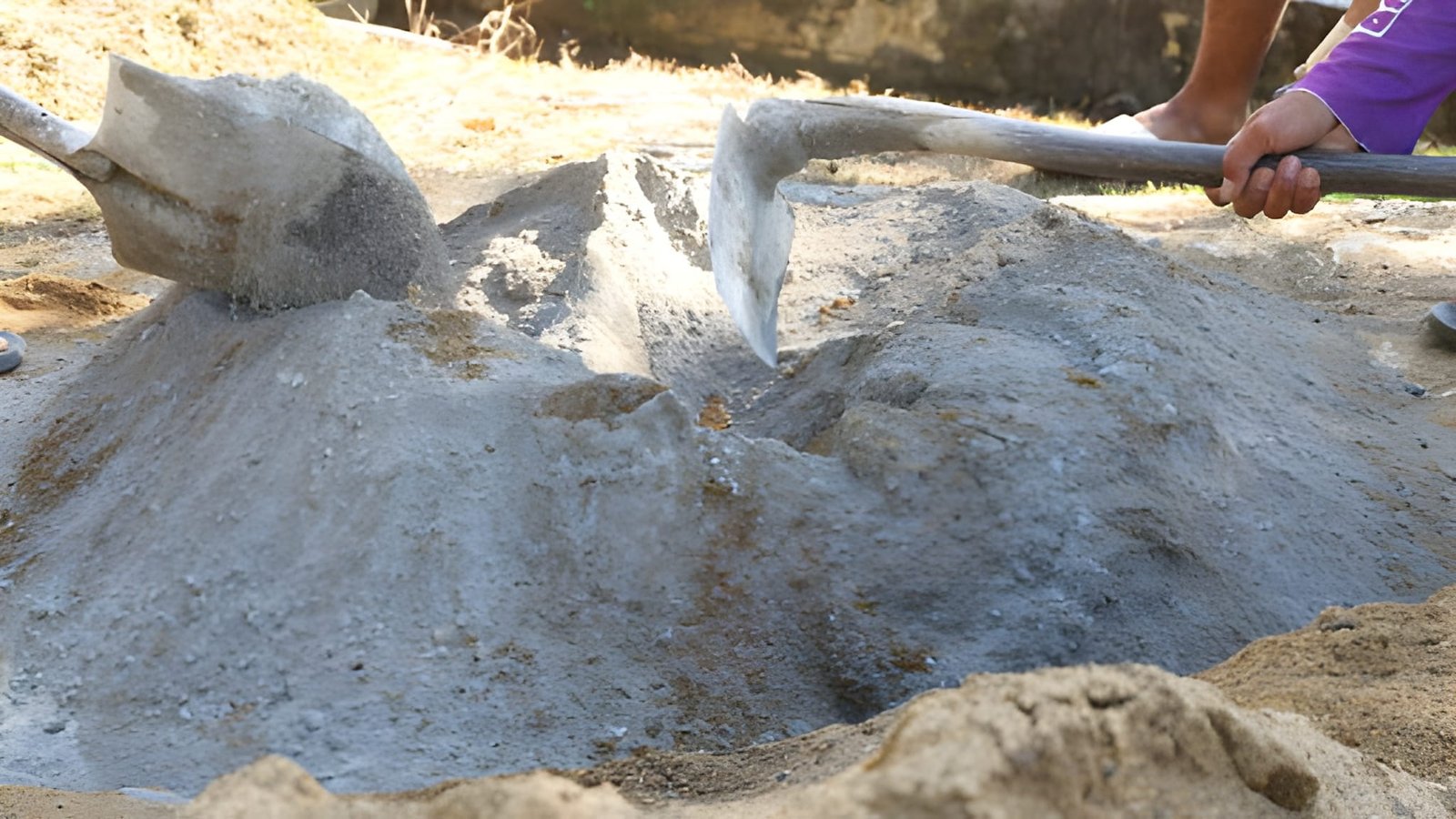
When it comes to construction, masonry, and home improvement projects, few materials are as essential as a sand and cement mix. Whether laying foundations, screeding floors, or building walls, achieving the perfect mix of sand and cement is crucial for strength, durability, and ease of use.
This guide will take you through everything you need to know about sand and cement mixes, from the right proportions to the best uses, helping you make informed decisions for your next project.
A sand and cement mix is a basic building material made by combining fine aggregates (sand) with cement, a binder that hardens over time when mixed with water. The combination of these materials creates a strong and durable substance that can be used for a variety of applications, including:
Mortar: For binding bricks and blocks together.
Plastering: To create a smooth, finished surface on walls and ceilings.
Floor screeding: For leveling and preparing floors for final finishes.
Concrete: By adding gravel or crushed stone, you can create concrete for heavy-duty applications like foundations and slabs.
Understanding how to mix sand and cement properly is vital to ensuring the success of your project.
Before diving into the perfect mix, it’s important to understand the types of cement available, as each may have different properties suited to specific tasks:
Ordinary Portland Cement (OPC): This is the most common type of cement and is suitable for most construction projects, from mortar to plastering and general concrete.
Rapid Hardening Cement: This type of cement hardens more quickly than OPC, making it ideal for projects that need fast completion.
White Cement: Used for decorative applications like architectural finishing, it produces a smoother, whiter finish.
Just as with cement, there are different types of sand to consider for your sand and cement mix:
Sharp Sand (Concrete Sand): With larger particles, sharp sand provides better strength and durability. It is typically used for concrete and floor screeding.
Soft Sand (Building Sand): This sand has finer grains and is suitable for plastering and mortar due to its smoother texture.
Plastering Sand: Specially graded for smooth and consistent finishes, this sand is ideal for wall plastering.
The type of sand you choose will depend on your project’s needs.
One of the most critical factors in getting the right mix is understanding the correct ratio of sand to cement. The right proportions can vary based on the specific application, but here are some general guidelines:
1. For Mortar (Bricklaying and Block Laying):
Ratio: 1 part cement to 4 or 5 parts sand.
Purpose: Mortar acts as a binding agent to hold bricks and blocks together while also allowing for some flexibility.
Tip: Always use soft building sand for mortar to ensure a smooth, workable consistency.
2. For Plastering (Internal and External Walls):
Ratio: 1 part cement to 5 or 6 parts plastering sand.
Purpose: A smoother, finer mix is required for plastering to create an even surface on walls and ceilings.
Tip: Ensure the sand is well-graded and free of impurities for a perfect finish.
3. For Screeding (Flooring):
Ratio: 1 part cement to 3 or 4 parts sharp sand.
Purpose: Screed provides a level, solid base for floor coverings such as tiles, laminate, or carpet.
Tip: Use sharp sand for added strength in your floor screed mix.
4. For General Concrete (Paths, Patios, Driveways):
Ratio: 1 part cement to 2 parts sharp sand and 3 parts gravel or crushed stone.
Purpose: Concrete is a durable, load-bearing material suitable for a range of heavy-duty applications.
Tip: Adding gravel increases the compressive strength of the mix.
Getting the right ratio of sand and cement is only part of the equation; how you mix these materials is equally important. Proper mixing ensures the cement coats the sand particles evenly, resulting in a strong and uniform mixture. Here’s a step-by-step guide to mixing sand and cement:
1. Measure Materials: Use a consistent method to measure sand and cement. For larger jobs, consider using a wheelbarrow or bucket as your measuring unit.
2. Dry Mix First: Before adding water, thoroughly mix the sand and cement together while they’re dry. This ensures an even distribution of cement through the sand.
3. Add Water Gradually: Slowly add water to the dry mix, continuing to mix until you reach the desired consistency. The mix should be workable but not too runny.
4. Mix Thoroughly: Whether using a cement mixer or hand mixing, make sure the blend is fully combined with no clumps of dry cement or overly wet patches.
5. Use Immediately: Cement starts to set as soon as it comes into contact with water, so it’s essential to use your mix within 1-2 hours, depending on the type of cement.
Adding Too Much Water: While water is essential for workability, adding too much can weaken the mix, leading to cracks and reduced durability over time.
Incorrect Proportions: Not following the recommended sand-to-cement ratio can compromise the strength of your mix, resulting in poor structural integrity.
Overmixing: Overmixing can cause air to become trapped in the mix, weakening the final product. Aim for a thorough but efficient mixing process.
1. Building Foundations:
For strong and durable foundations, using the right sand and cement mix is crucial. Typically, a 1:3:5 ratio of cement, sand, and gravel is used to create a robust concrete base for homes and other structures.
2. Bricklaying:
The right mortar mix (1:4 cement to sand) ensures that bricks or blocks are securely bonded, creating walls that can withstand pressure and weather elements.
3. Floor Screeding:
A 1:4 mix of cement to sharp sand is ideal for leveling floors, providing a smooth surface for tiles, carpets, or wooden flooring.
4. Plastering:
A smoother plaster mix, using a 1:5 ratio of cement to fine sand, allows for the creation of clean, smooth surfaces on walls and ceilings.
One of the most important aspects of any construction project is the quality of materials used. Poor-quality cement or impure sand can drastically affect the strength and longevity of your structures. Always make sure to source your materials from reputable suppliers.
For those in London, Kent, Essex, and beyond, Concrete King offers top-quality cement, sand, and pre-mixed solutions tailored to your project’s specific needs.
Achieving the perfect sand and cement mix is key to the success of any construction project, whether you are building a new home, laying a patio, or plastering a wall. By following the guidelines in this article, you will ensure that your mix is not only durable and strong but also suitable for your specific project.
At Concrete King, we pride ourselves on providing high-quality materials and expert advice to help you get the job done right. From premium cement and sand to pre-mixed solutions tailored to your project’s needs, we have everything you need to ensure a smooth and successful construction process. Whether you are working on a large-scale commercial build or a small DIY project, Concrete King is your go-to supplier in London, Kent, Essex, and beyond.
Contact us today to find out more about our sand and cement mix products, and let us help you bring your construction vision to life. With Concrete King, you are not just getting materials you are getting quality, reliability, and peace of mind.
Whether it’s the amount of ready mixed concrete to be used for concrete slabs, or working out how much needs to be combined with coarse aggregate, we’ve got the solution.
To place your order or to discuss your requirements further please contact our friendly team today who will be happy to help with the concrete mix calculator.
Visit our Concrete Calculator page where you can access more calculate options.



